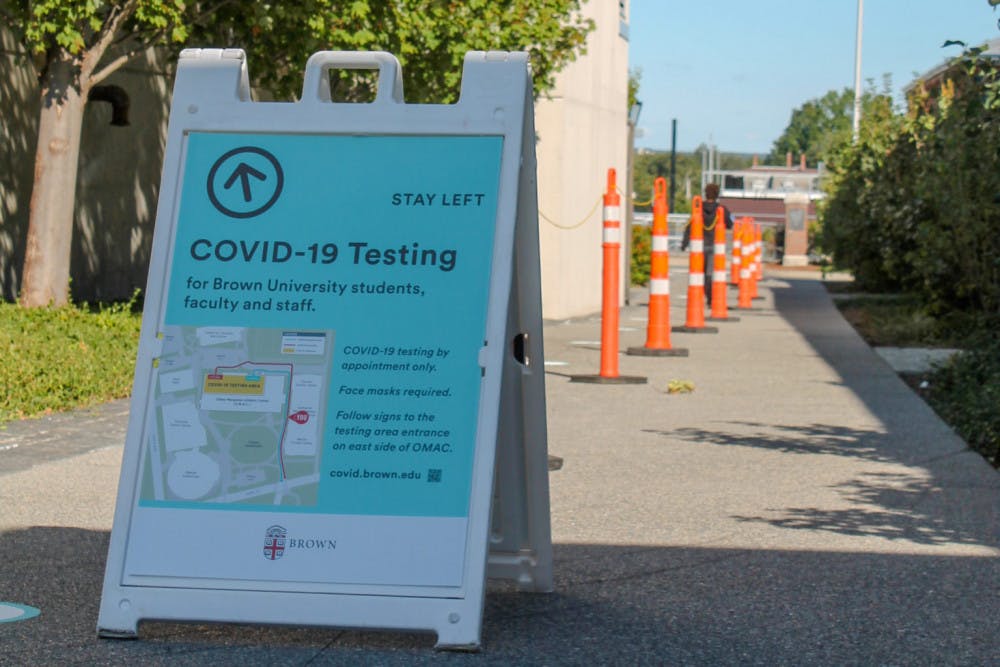37 University community members tested positive for COVID-19 through the asymptomatic testing program from Jan. 10 to Jan. 17, which included the move-in period for the spring semester, according to the Healthy Brown COVID-19 Dashboard.
Executive Vice President of Planning and Policy Russell Carey ’91 MA’06 attributed many of the positive cases to students who were most likely exposed to the virus before arriving on campus and tested positive immediately upon arrival. The cases are “unfortunate, but the (upside of it) is that they were identified, they can be isolated, their contacts can be traced and we (can) prevent further spread and infection on campus,” Carey told The Herald.
There was a lower number of positive cases in the second week after move-in. From Jan. 17 to Jan. 21, there have been 15 positive COVID-19 cases from asymptomatic testing in the Brown community. This decrease and Rhode Island’s declining positivity rate is “encouraging,” Carey said.
Given the larger cohort of students, including first-year students who are new to campus, “there’s just people having to learn what the (COVID-19) guidance means,” Carey said. But the University is “not seeing clusters or outbreaks,” he added, which “has been consistent pretty much all along for us.”
Around 2,200 more students are living on campus, off campus or commuting locally this semester than in the fall, University Spokesperson Brian Clark told The Herald.
First-years have been allowed to enroll on-campus for the spring and summer semesters after not having been able to come to campus in the fall, in accordance with the University’s reopening plan for the 2020-2021 academic year, The Herald previously reported.
Campus Life and Residential Peer Leaders are “trying to make this (as) positive and supportive and comfortable (an) environment for first-years as they possibly can,” Carey said. “I think that the transition to college is a challenge in any circumstance and doing it in a pandemic is much more so.”
To prepare for the larger number of students living on or near campus, the University reserved additional spaces for quarantine or isolation, Carey said. A “small percentage” of a total 568 spaces are currently in use. Any students who have tested positive, were identified as contacts of positive cases, arrived past the move-in dates or have travel quarantine needs are “all being accommodated,” he said.
Despite the increased enrollment of students in the University’s testing program, the transition has been “very smooth,” Carey said. The Broad Institute, the University’s testing partner, commits to providing testing results within 24 hours from when they first receive a testing sample.
The University experienced “a learning curve over the course of the (fall) term” with the testing program, Carey noted. There was a lot of uncertainty about the Broad Institute’s ability to “keep up that turnaround time” of 24 hours once they started processing 100,000 tests a day, Carey said.
But now “we’re typically seeing results faster than that,” he said. The testing turnaround time is “something that we’ll continue to watch carefully because I think we’re probably a little ahead of other institutions in terms of having students come back.”
The greater volume of students has affected the number of people arriving and leaving test centers. “Particularly in the middle of the day, during the week, there are more lines than there were in the fall,” Carey said, adding that making testing appointments early in the morning may avoid a crowded line.
“While we certainly have had challenges here and there with the testing process and the online registration and the sites themselves, these have been pretty few and far between,” Carey said.
Once Quiet Period ends Jan. 27, hybrid classes may be allowed to meet in-person, according to a Dec. 27 community-wide letter from Vice President for Campus Life Eric Estes. The decision to allow in-person classes will be announced before Jan. 27, “but we’ll have to wait and see until early next week to know for sure,” Carey said.
“Overall, we feel really good about last semester, and I think that’s what gives us a lot of confidence going into the (spring) semester, even with a larger population,” he said.

ADVERTISEMENT




